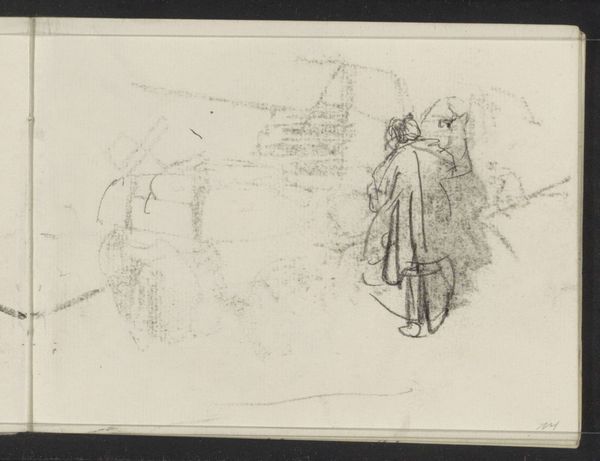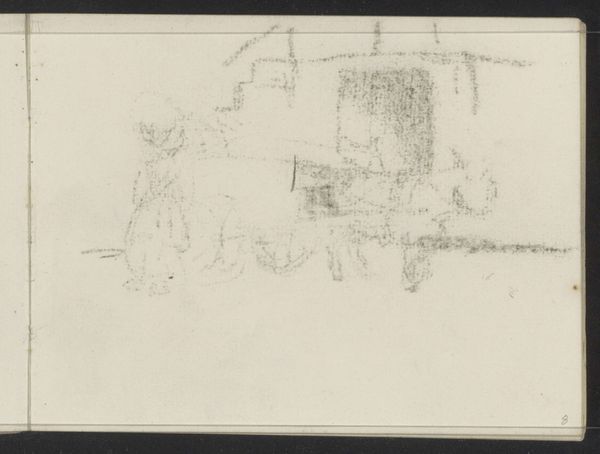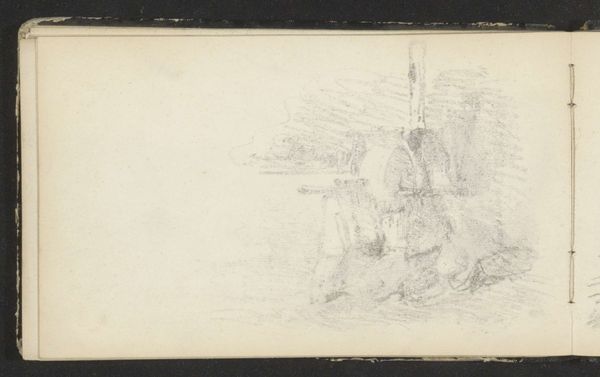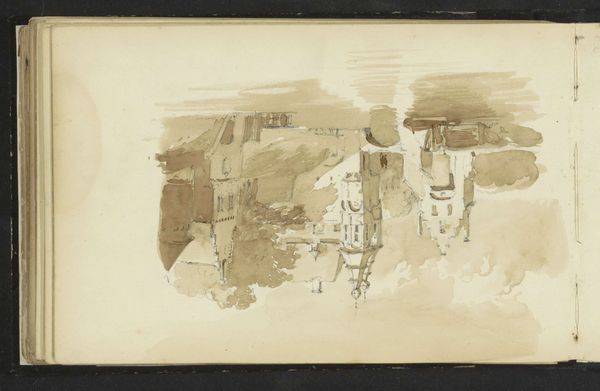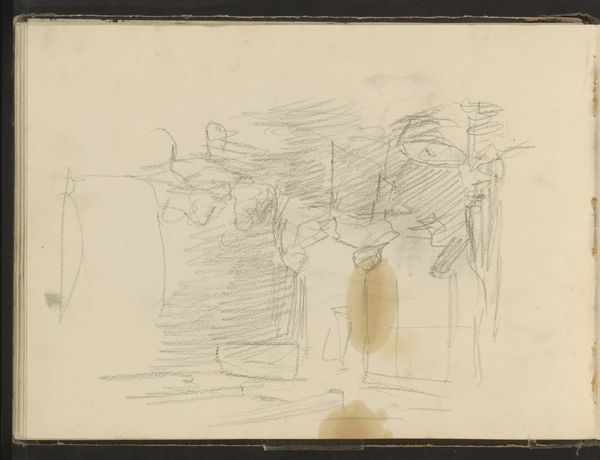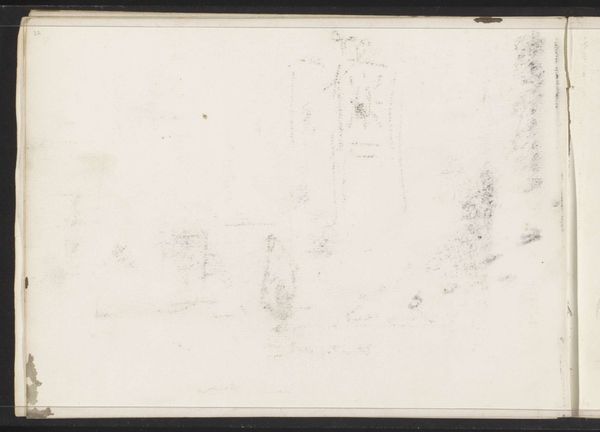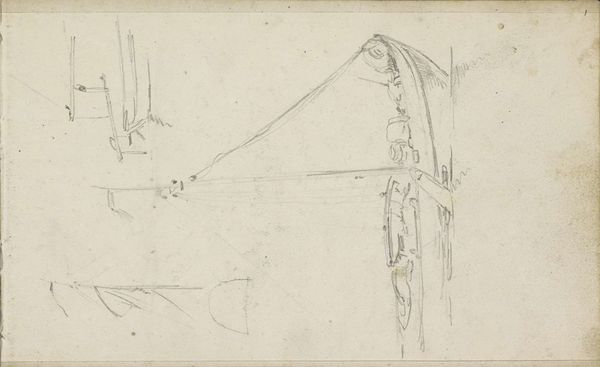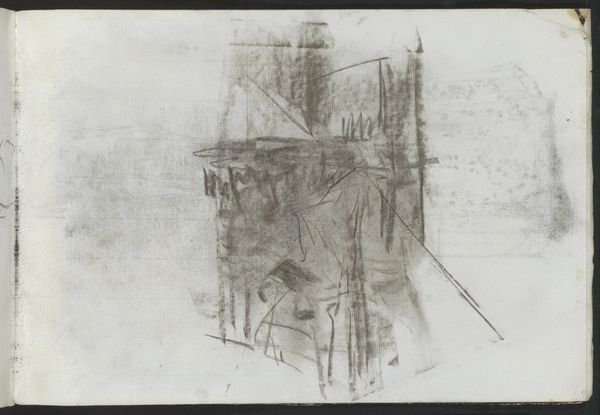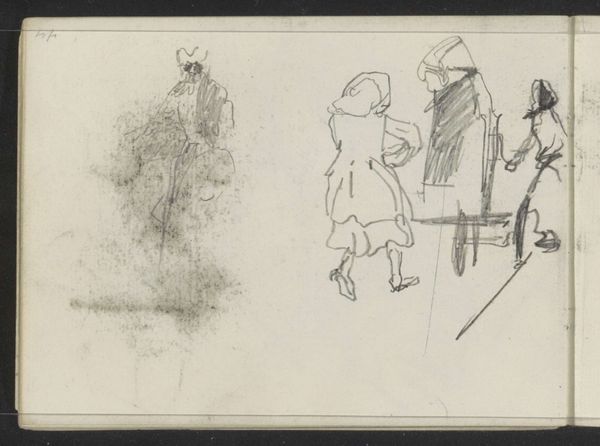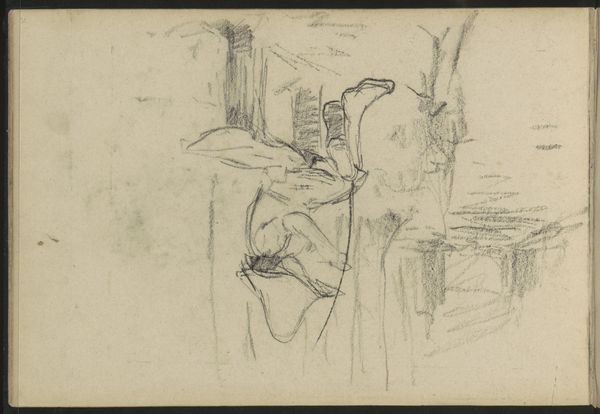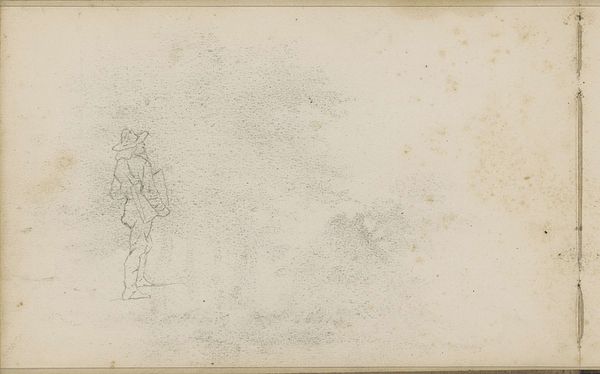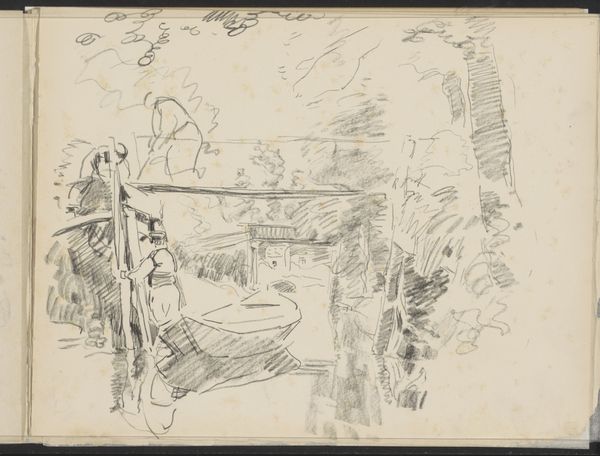
Copyright: Rijks Museum: Open Domain
Editor: This is "Standing Figure, Seen from the Back" by Isaac Israels, created sometime between 1886 and 1934. It's a pencil drawing, and I find it so intriguing how much is suggested with so few lines. What significance do you see in this sketch, considering its sparse nature? Curator: Ah, the power of suggestion! It’s almost like glimpsing a memory, isn't it? The figure's anonymity is key. We are denied a face, forcing us to project our own emotions and experiences onto the silhouette. Do you notice how the lines of the coat seem to flow, almost concealing the figure's form, creating a sense of quiet introspection, or even vulnerability? Editor: I do. It’s like they’re disappearing into the background. Is there anything to read into the clothing itself? It looks almost like a uniform or professional attire? Curator: Perhaps. The coat could symbolize the roles we assume in society. Yet, because we only see the back, that sense of personal identity is muted. There's a strong pull toward archetypal representation here. It reminds me of certain depictions of the wanderer figure across time. One thinks of Caspar David Friedrich or even, distantly, the image of pilgrims, minus the distinct garb, of course. What impression does that context create for you? Editor: It makes me think about the human condition, really. Almost a timeless feeling of being an individual in a larger, indistinct world. Thank you for that interpretation. I saw something much more simple before! Curator: And I've gained from your reading too – the timeless aspect you picked up is key to its enduring resonance. I wouldn't want to impose on a sketch a reading of 'absence' or 'loss' which might come up. Rather, an open invitation, indeed, to timeless considerations!
Comments
No comments
Be the first to comment and join the conversation on the ultimate creative platform.
